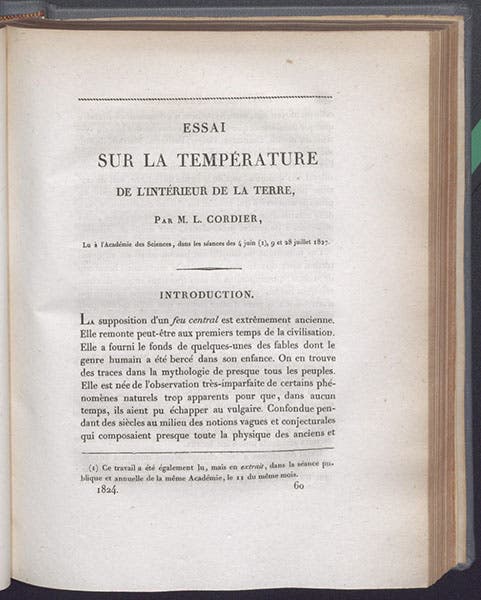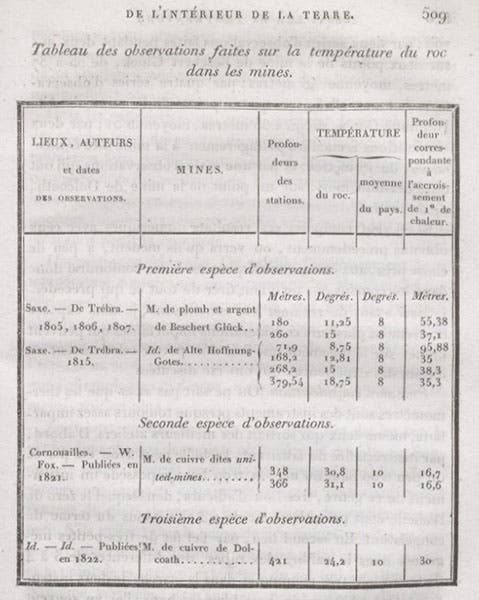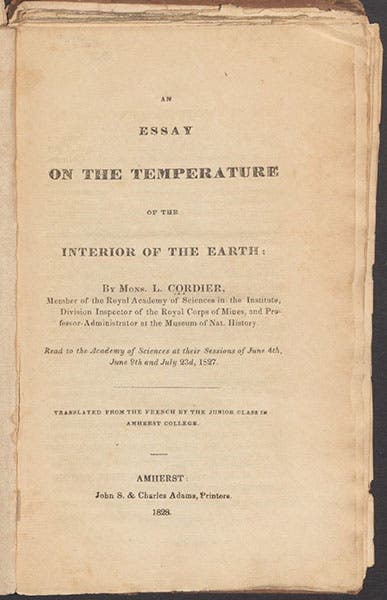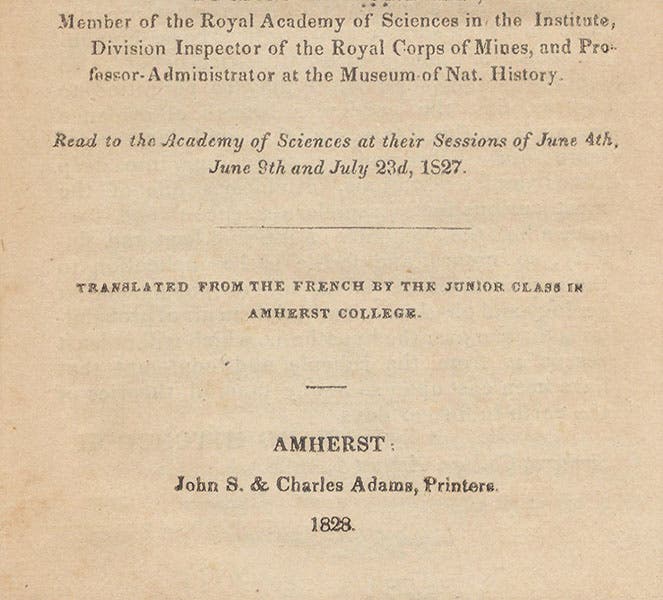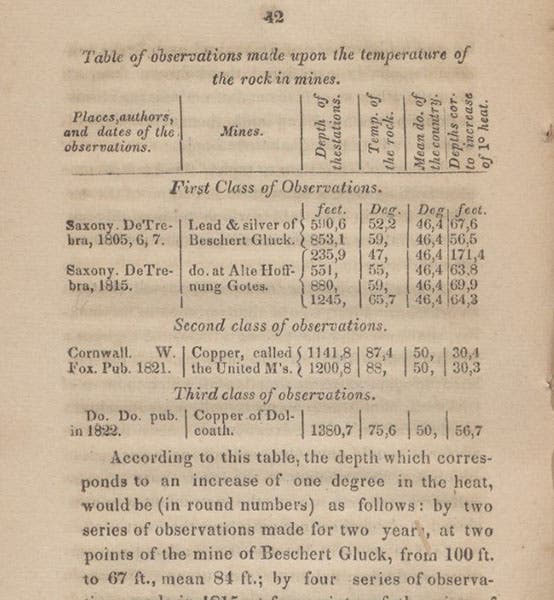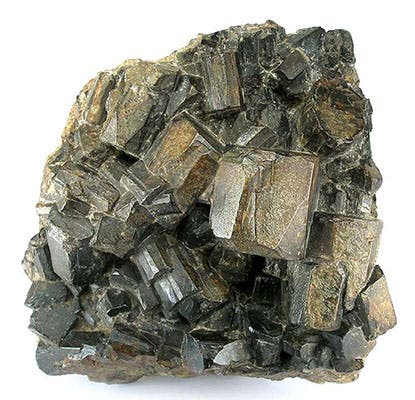Scientist of the Day - Louis Cordier
Pierre-Louis-Antoine Cordier, a French geologist, was born Mar. 31, 1777. Cordier went along on Napoleon's expedition to Egypt in 1799 (like many of his scientific colleagues, he was barely in his twenties when he departed). When he returned to France, he slowly rose through the strata of his profession and ultimately assumed the chair of geology at the Museum of Natural History in Paris in 1819, succeeding the great Barthélemy Faujas de Saint-Fond in 1819. He taught there until his death in 1861, one day shy of his 84th birthday.
Cordier is best known for his contributions to the theory of the earth's internal heat. Several Frenchmen, beginning with the great comte de Buffon, had argued that the earth is a cooling body, but without much evidence; Cordier provided that evidence. He took a thermometer down into various mines and measured the temperature, not of the mine shafts, but of the rock itself, and also of standing bodies of water deep in the mines, and he determined that the temperature rises about 1 degree Fahrenheit for every 25 meters you descend. This meant that the earth had to have a large internal core that was completely molten.
He published his results in an article, "Essai sur la temperature de l'interieur de la terre," in the Memoires of the French Academy of Sciences in 1827 (second image, above). The article had several tables showing how temperature rises with depth, one of which we reproduce here (third image, just above). We have the journal and Cordier's paper in our serials collection.
We also have, in our history of science collection, a delightful translation into English of Cordier's paper, called An Essay on the Temperature of the Interior of the Earth (1828; fourth image, just above). The translation was the brainchild of Edward Hitchcock, professor of natural history at Amherst College in Massachusetts, and what makes the translation delightful is that it was the work of the "Junior Class of Amherst College” and says so right on the titlepage (fifth image, just below). Now that is a worthy class project! We show as well the page that has the translation of the temperature-depth table from the French edition (sixth image, below).
Cordier was also an excellent mineralogist and collector, and he supplied some 200,000 specimens to the Museum, essentially founding their mineralogy collection. Accordingly, he has a mineral named after him, cordierite. Wikipedia tells us it is a magnesium iron aluminum cyclosilicate. A picture, as usual, says a lot more, at least to me (seventh image, below).
And so we see one of the bright sides of being a mineralogist. Astronomers get their names assigned to lunar craters or asteroids, all of which look the same and none of which anyone ever gets to see anyway. Cordier’s root-beer colored mineral namesake is much cheerier, and you can hold it in your hand.
Dr. William B. Ashworth, Jr., Consultant for the History of Science, Linda Hall Library and Associate Professor emeritus, Department of History, University of Missouri-Kansas City. Comments or corrections are welcome; please direct to ashworthw@umkc.edu.


